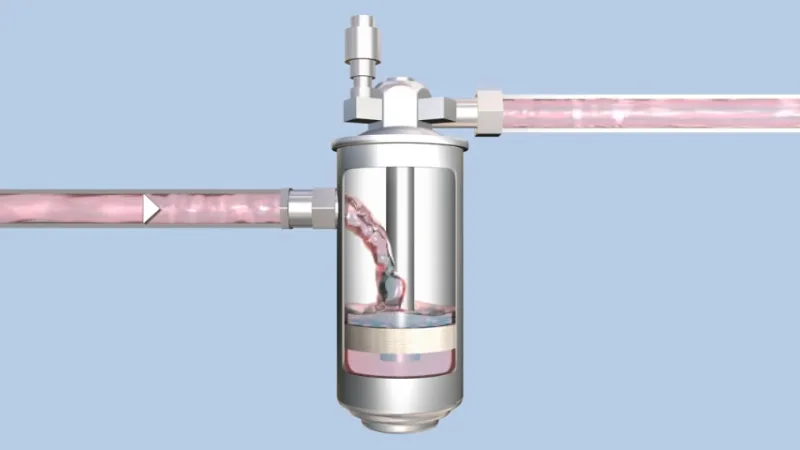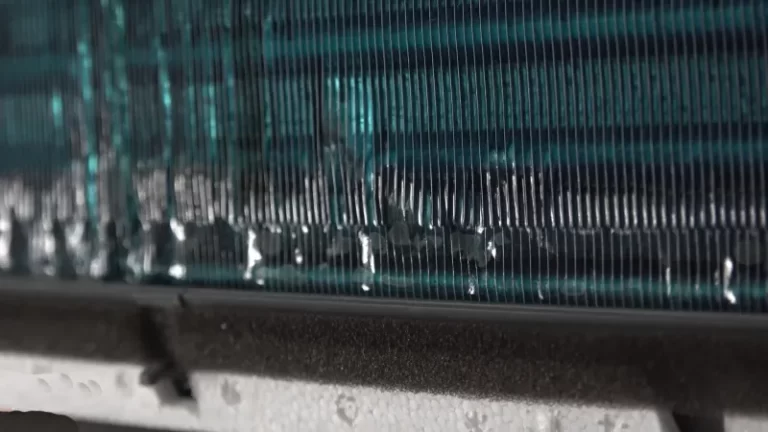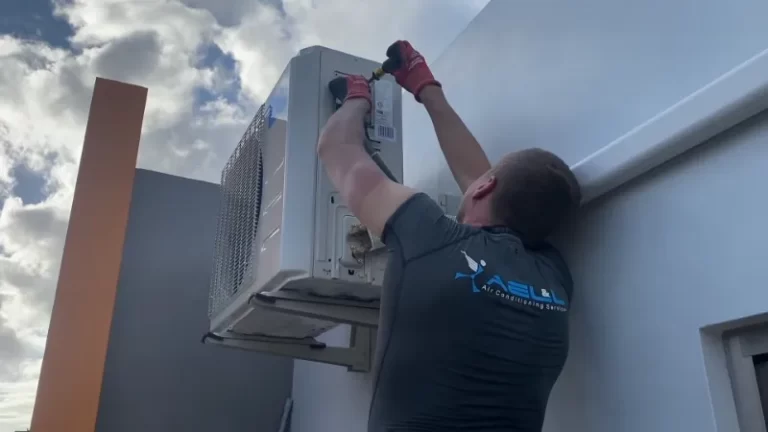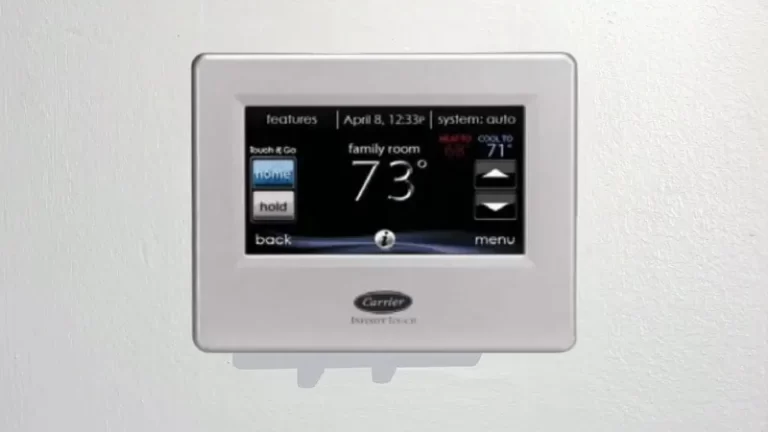Receiver Drier Freezing Up During Recovery – Causes and Fixes

During the recovery process of an air conditioning system, debris accumulation in the drier can cause a significant issue. This article will discuss how restrictions formed due to accumulated debris could result in temperature differences and the freezing up of receiver driers.
You'll Learn About
Causes of Receiver Drier Freezing Up
The receiver drier is an important part of the air conditioning system because it removes moisture and debris from the refrigerant before it enters the compressor.
However, if material builds up or a blockage arises in the drier, it might cause freezing. Now, we will look at the possible causes of receiver drier freezing.

Accumulation of Debris
Debris accumulation inside receiver driers is a common cause of them freezing up. As refrigerants move through different sections of AC systems throughout time.
This includes hoses and evaporators; it is possible that some small metallic particles remain lodged inside the hoses. Even after flushing operations, buildup can occur further downstream, potentially obstructing items.
Like your expansion valve, but ultimately ends up harming (clogging) everything between that point. For example, freeze protection switches on suction lines flowing directly into the dryer chamber become blocked, preventing liquid flow output).
Formation of Restriction
Another reason receivers may freeze is if restrictions form within its passages. It is caused by direct exposure to cold surrounding environments for extended periods of time without proper insulation, resulting in heat loss.
As a result, the temperature differential across the board is reduced. It also prevents mass movement in these areas until they are frozen. As a result, line temperatures vary.
It makes it difficult to reestablish fluid movements. Then it threatens ice sheet formation by preventing compacting pollen beads dust dirt atomized oil, for example, from properly circulating around critical components.
They are not designed to withstand temperature gradients at low temperatures. As a result, it is occasionally encountered during extended downtime or prolonged operation in unusually harsh conditions.
Difference in Line Temperatures
There may be times when one part produces/receives significantly hotter/colder incoming/outgoing water than others. It’s either because the wrong size/accessory was used/the intended design was flawed or because variable external factors went unaccounted for.
Environmental/operational factors Excursions may cause sensor misalignment, which is important when recording comparative thermometers. Then there will be able to accurately distinguish exceptional local readings, enable root cause analysis, and evaluate performance.
The accuracy of functional results informs needed improvement changes based on factual data collected and compared to trends involving system-wide trips and instrument readings for anomalies, whether voltage or otherwise.
Furthermore, current sensors or power losses are traced along circuits, allowing the dryer to monitor and respond accordingly.
Finally, a receiver drier is essential equipment in an air conditioning system for removing moisture and debris from refrigerants. However, if not properly maintained or exposed to excessively cold temperatures.
Without insulation, damage can occur, preventing other critical components from functioning properly and leading to supply mismanagement. This occurs throughout all phases, resulting in increased energy consumption and overloading fuses and transformers.
By performing preventive maintenance, you can avoid such potential setbacks as property/business fires.
Signs of a Frozen Receiver Drier
A receiver drier is an essential component in an air conditioning system that helps to remove moisture and debris from the refrigerant. When it becomes clogged or malfunctioning, problems can arise within the system.
Drop in Temperature
One sign that there may be issues with your receiver drier is a noticeable drop in temperature produced by your air conditioner. This could indicate that there is restricted flow due to debris buildup, causing the refrigerant’s pressure to drop and resulting in lower temperatures.
Appearance of Frost
Frost build-up on the surface or nearby components is another common symptom of a frozen receiver drier. Within engine cycles, the restriction causes refrigerant fluid to change.
When the internal temperature falls below the freezing point, any moisture present freezes up as frost outside. This effect is precipitated by thermodynamic laws at the location surrounding expansion valve points where the liquid phase begins to change into gaseous form.
The laws that cause adiabatic cooling, which lowers the dewpoints of water vapor-laden gas/liquid mixtures far below atmospheric temperatures. It promotes the accumulation of ice crystal clusters by affecting efficient heat transfer.
As a result, overall performance suffers, with visible symptoms such as icing up evaporator coils impeding airflow and leading to further inefficiency loss if not cleared efficiently.
It also leaves marks on exterior pipes, where many people experience dehumidifying effects. It is observed drying rather than frosting at temperatures ranging from 30°F to 40°F, depending on how highly saturated the contained propanol/fluid blend is.
It behaves based on dissolution tendencies because solubilities vary to varying degrees. Once oil lubricants have left seepage areas, avoid excessively low superheat during continuous operation.
However, they are rarely inspected for damage during their use. “Prevention Is Better Than Cure” applies here, so keep regular maintenance. Also, including checkups/service calls on the schedule to ensure smooth running and proper alignment won’t hurt.
While catering care, the highest priority requirement was always one step ahead. It reduces adverse operating costs from add-on damages by preventing costly replacements.
Low Cooling Performance
Finally, if your receiver drier begins to fail, you may notice decreased cooling performance. This can occur as a result of a decrease in pressure and flow within the system.
When this happens, air conditioners are unable to adequately cool indoor spaces or vehicles, resulting in lower efficiency. As a result, there is a need for repair/replacement work to be started as soon as possible by qualified service personnel with industry-specific experience.
With rigorous training indicating prompt corrective measures, optimal level functioning is maintained. As a result, overall operating costs associated with extending the expected lifespan of the appliance are reduced.
Prevention of Receiver Drier Freezing Up
The receiver drier is a critical component in the proper operation of an air conditioning system. It is critical in removing debris and moisture from the refrigerant, keeping it clean and dry as it flows through the system.
However, if debris builds up within the dryer over time, a restriction can form. This restriction may cause temperature differences in the lines. Because refrigerant temperatures are closely related to pressure changes in different systems.
Freezing up around cold spots caused by temperature drops is a common issue caused by this type of problem. It is caused by a reduced flow rate or a low-pressure area along some points in the cooling circuitry of your A/C system.
To avoid these problems altogether, several maintenance measures must be taken regularly:
Regular Maintenance
It would be beneficial if you performed routine maintenance on all components of your vehicle’s air conditioning equipment. Professionals recommend having your vehicle serviced every two years or every 20-30K mile traveled.
However, for actual suggestions based on differing interior architecture and mechanical features, consult manufacturer specifications. You must do it on a regular basis, or expert inspection schedules may discover any flaws before they become essential.
In terms of performance output capability. This gives personnel enough time to perform necessary repairs, avoiding emergency failures and costly service. Service expenses incurred during off-hours on weekends – warranties never cover hours outside of typical business working hours.
Proper Cleaning
While purging such devices according to standard-tested processes prescribed by AAIA guidelines, each element inside car HVAC demands proper attention. This is in accordance with EPA environmental standards requiring ecologically responsible operations at AutoService locations.
Cleaner emissions compliance standards regulatory agency restrictions are meant to assure qualitatively enhanced margins. This is done to replace damaged parts, such as dried precipitates formed naturally when functioning at a slower rate than intended, hence limiting longevity.
Overall reliability and long-term sustainability of autonomous heating-cooling methods.
Use of High-quality Refrigerant
For air-conditioning systems, it is critical to use high-quality refrigerants. Moisture and other impurities in low-grade refrigerants can destroy system components.
It causes them to malfunction or completely fail due to chemical interactions that occur during operation. It has an impact on features like boiling-point depression rates within confinement zones.
Zones such as dryer areas meant trapped particles accumulated along pipes were slowly deposited, accumulating larger amounts. This results in obstructions inhibiting safe passage of warm-cool temps dependant space surrounding enclosed unit for consistent operation.
Furthermore, optimized workflow extended subjected halts problems needing costly repairs. Furthermore, unneeded dangers related with vehicle operational capabilities combustion smoke emissions are a worry.
While driving long-term effects on ecosystem and society as a whole, environmentally concerned individuals seek to reduce their carbon footprint by switching to renewable energy sources.
Finally, keeping your receiver drier from freezing requires frequent maintenance. Each AC System’s makeup is comprised of adequate cleaning techniques between periods and the use of quality coolant.
Owners can avoid frustrating issues caused by aggressive buildups by rigorously following these guidelines. This will have an impact on overall A/C functionality.
It aids in restoring your unit’s ideal status while providing trouble-free ownership without the need for costly last-minute recalls.
Recovery of Frozen Receiver Drier
Recovery of Frozen Receiver Drier in Air Conditioning System
When the debris accumulates and a restriction forms, it can cause a difference in temperature that might lead to freezing at specific points. This is when you need to recover your frozen receiver drier.
Shutting Down the System:
The first step towards removing frost from your air conditioning system’s frozen receiver drier is by turning off the unit. Shut down or disconnect all power sources that connect it with electricity or fuel.
A temporary shutdown could also help prevent further damage.
Allowing the System to Defrost:
Once you have shut down, you will need to allow time for everything inside of it (including pipes)to defrost naturally over some hours or days. Also, don’t try any harsh methods as they may harm parts and lead them into danger zone again.
During this process of thawing out ice buildup on critical components such as compressors’ coils should be checked simultaneously. If there’s rust present near those areas during defrosting stages inspection becomes more important.
Because black rust removal tools would be necessary otherwise complete functionality cannot ensure even after defrosting.
Replacement of the Receiver Dryer:
If steps one and two do not suffice, it may be essential to replace the entire receiver-dryer. Water may become caught between filters, obstructing airflow, depending on how efficient cleaning techniques are used.
This eventually leads to inefficient performance levels. (Reduced cooling). You might also need to know about acceptable micron rise.
The recovery of frozen equipment necessitates quick decision-making abilities along with expert handling guided by systematic adherence. Also, while checking before announcing tasks, the best outcomes are obtained.
Finally, it is important to remember that things–especially replacements–must always be considered before mending damages such as those discussed above. Hiring a competent hands-on person who has dealt with these technological disasters may ensure that no blunders occur, guaranteeing that the machine remains in top operational shape.
How Long Does a Receiver Drier Last?
- Replacement Schedule: Receiver driers should be replaced every 2 years or per the manufacturer’s recommendation. This is Important for Maintaining the Function of the Automotive a/c System.
- Filtering Foreign Material: The receiver drier filters out foreign material from the refrigerant, preventing damage to other components in the A/C system. Over Time, Contaminants Can Build Up and Affect Performance if Not Properly Filtered.
- Moisture Removal: Another crucial function of the receiver-drier is removing moisture from the refrigerant. Excess moisture can cause corrosion and freezing within the A/C system which leads to malfunctioning equipment.
- Reservoir Function: In addition to filtering and drying air being processed by an AC unit it also stores unused liquid refrigerants in a reserved area. The Reservoir Feeds Directly Back Into Tx Valve as Required.
- Lasting Lifespan: Last but least understanding replacing schedule helps ensure functionality so avoid longer than recommended replacement dates or you could end up paying far more down the road. The prolonged Use Increases the Risk of Potential Malfunction Which Means Higher Repair Costs.
To Recap
Refrigerant systems are prone to complications if not maintained correctly or subjected to unforeseen situations like accumulating debris during service processes.
Therefore, it is essential always to monitor airflow and perform regular maintenance procedures on such devices regularly.
Failure to do so would ultimately lead to inefficient performance by these equipment and may even potentially disable them altogether.




